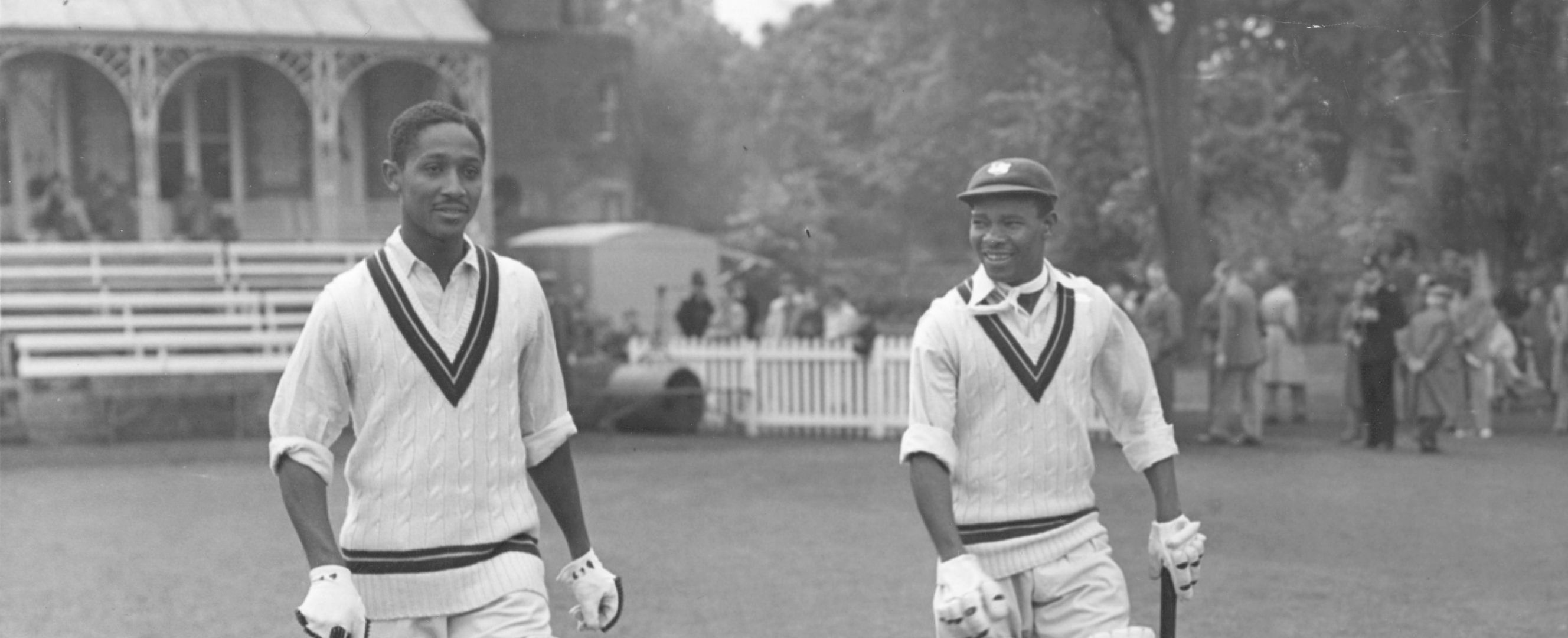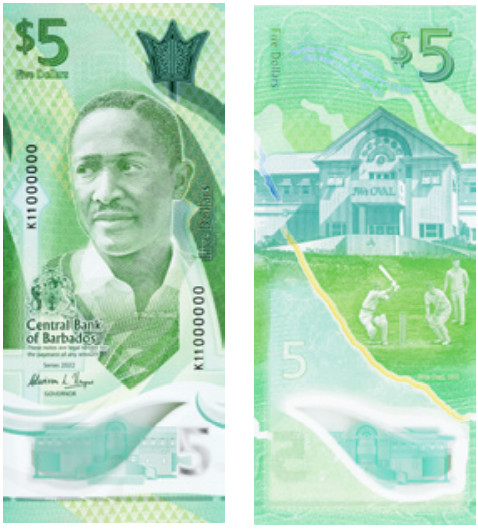Barbados’ $5 banknote pays tribute to the man who united West Indian cricket
When the central bank of Barbados was thinking through which features to prioritize as part of the redesign of its banknotes debuting this month, the top priority was that the notes be authentically Barbadian. “Each note talks about our history, geography, and culture,” says Octavia Gibson, director of the bank’s currency and payments oversight department.
And what could be more Barbadian than cricket? It’s a sport the country has traditionally excelled in.
Barbados’ top cricketers play for the West Indies cricket team, a multinational men’s team of mostly English-speaking Caribbean countries administered by the West Indies Cricket Board. The WICB joined the Imperial Cricket Council (the sport’s international ruling body, now called the International Cricket Council) in 1926, and the team played its first official international match—called a “test”—in 1928. Unofficial world champions by the 1970s and ’80s, the team set a record streak of 11 consecutive test victories in 1984—one of the best in the sport’s history.
Barbados’ new banknote series is the first to be printed on polymer.
(IMAGE: COURTESY OF THE CENTRAL BANK OF BARBADOS)
Cricket administrator and educator Jeff Broomes attributes their success to the leadership and performance of Barbadian players. “The school that has produced the most test cricketeers is right here in Barbados,” he said at an event promoting his book, The West Indies Cricket Journey and Its Barbadian Influence. The statistics bear him out. Of the 385 men to play test cricket for the West Indies since 1928, 90 are from Barbados. “Almost every district that you walk in, you will find people on the road playing cricket,” says Gibson. “Not only on the road, you also see them on the beach. It’s one of the first games introduced to children.”
With cricket so much a part of the culture, it’s fitting that the Barbadian $5 note features cricket legend Frank Worrell. Together with Everton Weekes and Clyde Walcott, Worrell was one of the famous “Three W’s”—the strongest middle-order batters in the world at the time. All three were born in Saint Michael, Barbados.
Worrell was the first Black man to captain the West Indies cricket team for an entire series and was an exceptional manager, insisting on fair play, both on and off the field. The team lost just 3 of the 15 tests under his leadership, making him one of the most successful skippers in its history. Shortly after retiring, he was knighted by the late Queen Elizabeth II for his contribution to the game and was the first sportsman to be honored with a memorial service at Westminster Abbey when he died in 1967 of leukemia at age 42.
Uniquely Barbadian
This is not the first time Worrell has been featured on the country’s banknotes, but unlike in previous series, the design is now vertical, and Worrell is in his cricket gear rather than a suit. The back of the note has an image of Worrell at the pitch in front of the “3Ws Oval,” a cricket facility on the Cave Hill Campus of the University of the West Indies. The ground was upgraded and renamed in honor of the country’s three cricket legends when the West Indies hosted the 2007 Cricket World Cup.
The new banknotes—all with portraits of historic Barbadians—will be printed on polymer, a plastic substrate, which makes them more durable than cotton-based banknotes; new security features mean they will be harder to counterfeit.
On the $2, $5, and $10 notes, a clear plastic window has been added with a vignette of the image featured on the back. These vignettes are reproduced as holograms on the $20, $50, and $100 notes. The top of every note also has a small broken trident, which when held up to the light reveals the notes’ denomination. “The tridents signify that we broke away from being a colony and are now independent,” adds Gibson.
Gareth Evans, country director at De la Rue, the company that helped design the enhanced security features, thinks the map lines are what’s most unique about the series. When all six denominations are grouped together, a map of Barbados is revealed under ultraviolet light.
The other major design consideration was to ensure that Barbadians who are visually impaired or fully blind can differentiate between denominations. In consulting with representatives of the Association for the Blind and Deaf, the team came up with a set of tactile marks in the form of a distinct shape. The $5 note, for example, has a triangle and the $100 a square.
The banknotes are inscribed with lines from the national anthem. Above an image of Worrell batting are the words “We write our names on history’s page, with expectations great.”
Opinions expressed in articles and other materials are those of the authors; they do not necessarily reflect IMF policy.










